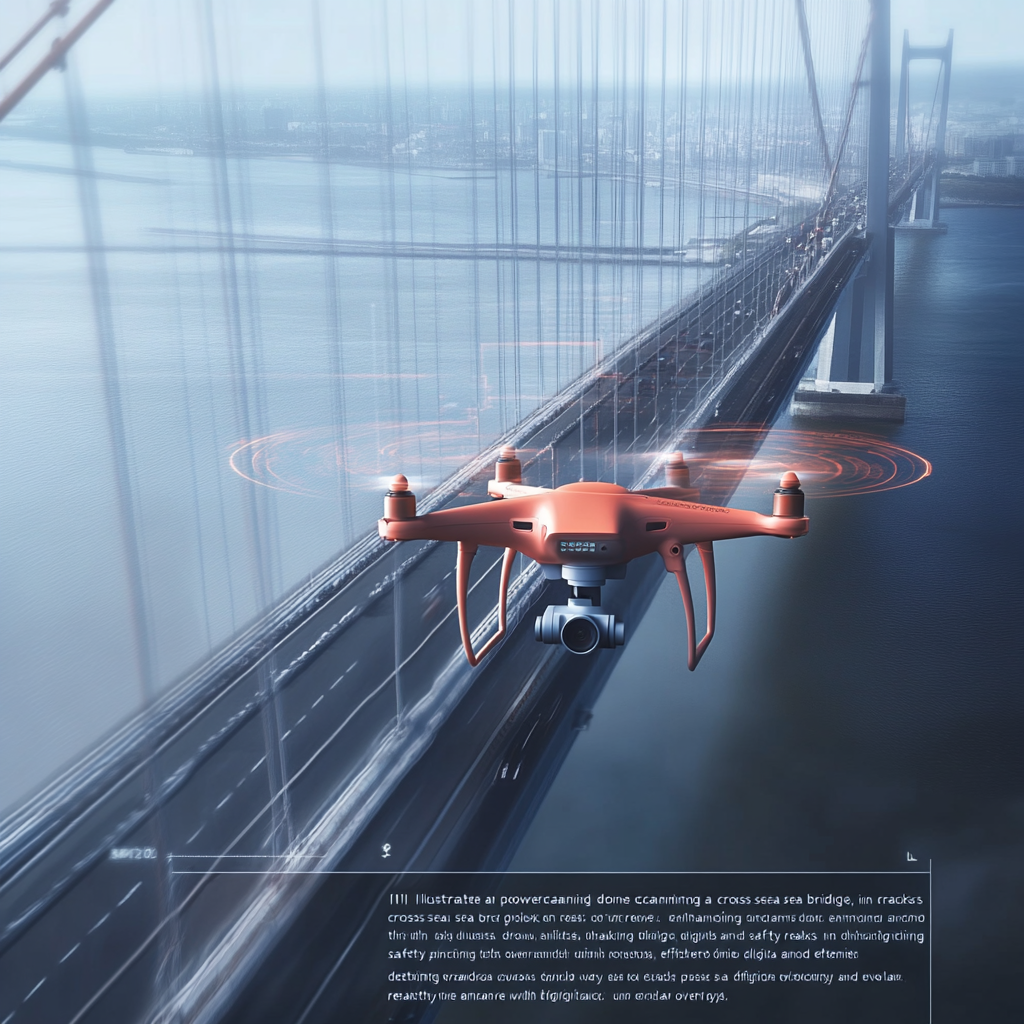
Revolutionary AI Unveiled for Instant Crack Detection on Ocean Spanning Bridges
AI-Driven Real-Time Crack Detection: The Future of Cross-Sea Bridge Maintenance
Picture this: a colossal structure stretches across the azure expanse of water, connecting bustling metropolises with the grace of a giant. It's not just a bridge; it's the Hong Kong-Zhuhai-Macao Bridge, a staggering 55 kilometers long and the longest cross-sea bridge on the planet. This architectural marvel dramatically shortens travel times while promoting economic unity among Hong Kong, Zhuhai, and Macao. Yet, along with its grandeur comes a Herculean challenge: keeping it safe and sound. The solution? A brilliant blend of artificial intelligence and cutting-edge technology that promises to take crack detection into the future.
Crack Detection: The Unsung Hero of Infrastructure Safety
Imagine someone trying to find a hairline fracture in a massive glass pane, or perhaps spotting a minuscule scratch on a shiny new car. Now amplify that difficulty tenfold – welcome to the world of bridge inspection! Old-fashioned methods of crack detection can be hit-and-miss, like searching for a needle in a haystack while blindfolded and spinning in circles. Enter the ingenious minds from the Hong Kong-Zhuhai-Macao Bridge Authority and the Wuhan Maritime Communication Research Institute. They’ve combined the power of machine vision with deep learning, creating an AI system that's sharper than an eagle's gaze and faster than a speeding bullet.
How Does This Magic Work?
You might be wondering: how on earth can AI spot cracks on such a grand scale? Grab your favorite beverage and let’s demystify the process:
-
Image Collection: Think of it as sending out little robotic scouts. Drones glide above the bridge, and underwater robots scour beneath the waves, snapping high-resolution images of the bridge surface. It's like a photo shoot, but instead of supermodels, we’ve got concrete and rebar on the runway.
-
Image Processing: Here’s where things get interesting. An attention-based deep learning model reviews these images with the precision of a master craftsman. It detects structural cracks that the human eye might overlook – like spotting a tiny flaw on a flawless diamond.
-
Analysis and Alerts: Once the AI has done its thing, it doesn’t just sit back and admire its handiwork. No, it zips off real-time alerts to maintenance teams, nudging them to get to work. “Hey folks, there’s a crack over here – better fix it before it becomes a problem!”
Now you might ask, why is this such a big deal? Let’s break it down.
Why This Technology is a Game-Changer
-
Safety First: Remember that infamous incident when a tiny crack turned disastrous? Real-time detection means safety isn’t left to chance; it’s actively enforced. Cracks detected promptly lead to mitigated risks and preserved lives.
-
Efficiency: Traditional inspections can feel like watching paint dry. Time-consuming and often inaccurate, they leave bridges vulnerable. This new AI tech turbocharges inspections, making them quicker and more reliable, like switching from dial-up to gigabit internet.
-
Cost-Effective: We all love saving a buck or two, and this technology can save millions down the line. A stitch in time saves nine, and in this case, early crack detection can dramatically cut maintenance costs.
- Longevity: If your health allows you to catch those early signs of aging (or wear and tear), you’ll probably add years to your life. Same goes for bridges! Regular monitoring extends their functionality, ensuring they serve as safe transport arteries for future generations.
The Ripple Effect of Innovation
As revolutionary as this technology is for the Hong Kong-Zhuhai-Macao Bridge, its implications extend far beyond. Picture other iconic cross-sea bridges around the globe adopting this nifty AI. The possibilities are endless!
-
Global Adoption: Once the efficacy of this system becomes clear, it's not a stretch to envision similar implementations popping up on bridges the world over. It's like a fashion trend – once it catches on, everyone wants a piece of the action.
-
Innovative Synergy: Imagine combining this crack detection technology with drones equipped with IoT sensors. A high-tech symphony of data collection and analysis could emerge, creating an unparalleled structural health monitoring system.
-
Evolution: With advancements in AI and machine learning unfolding at a dizzying pace, expect future crack detection systems to be even more sophisticated, potentially using generative algorithms that can predict where cracks might occur before they happen.
Conclusion: A Bright Future Ahead
The world of infrastructure maintenance is unmistakably changing, and it’s safe to say we’re entering an exhilarating era of innovation. The AI-driven, real-time crack detection system for cross-sea bridges isn’t just a fleeting enhancement; it's the dawn of a new chapter in building safety and efficiency. Let’s embrace these advancements and bid adieu to the days of unreliable inspections and the lurking dangers of undetected structural problems.
Curious about what's next in the realm of neural networks and automation? You’ll want to keep your finger on the pulse of these exciting developments. So, be sure to subscribe to our Telegram channel: @channel_neirotoken and keep those gears of knowledge turning!

